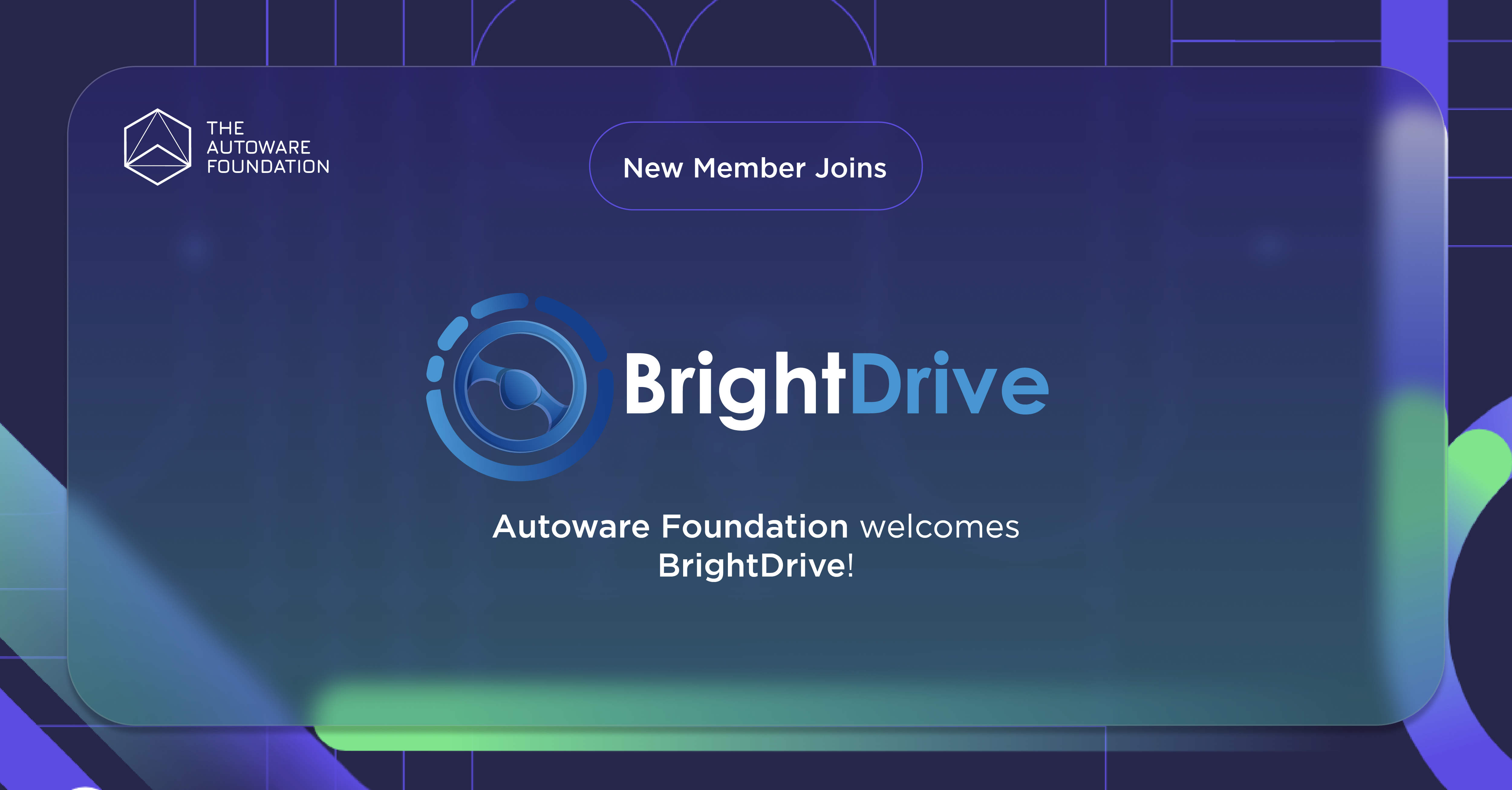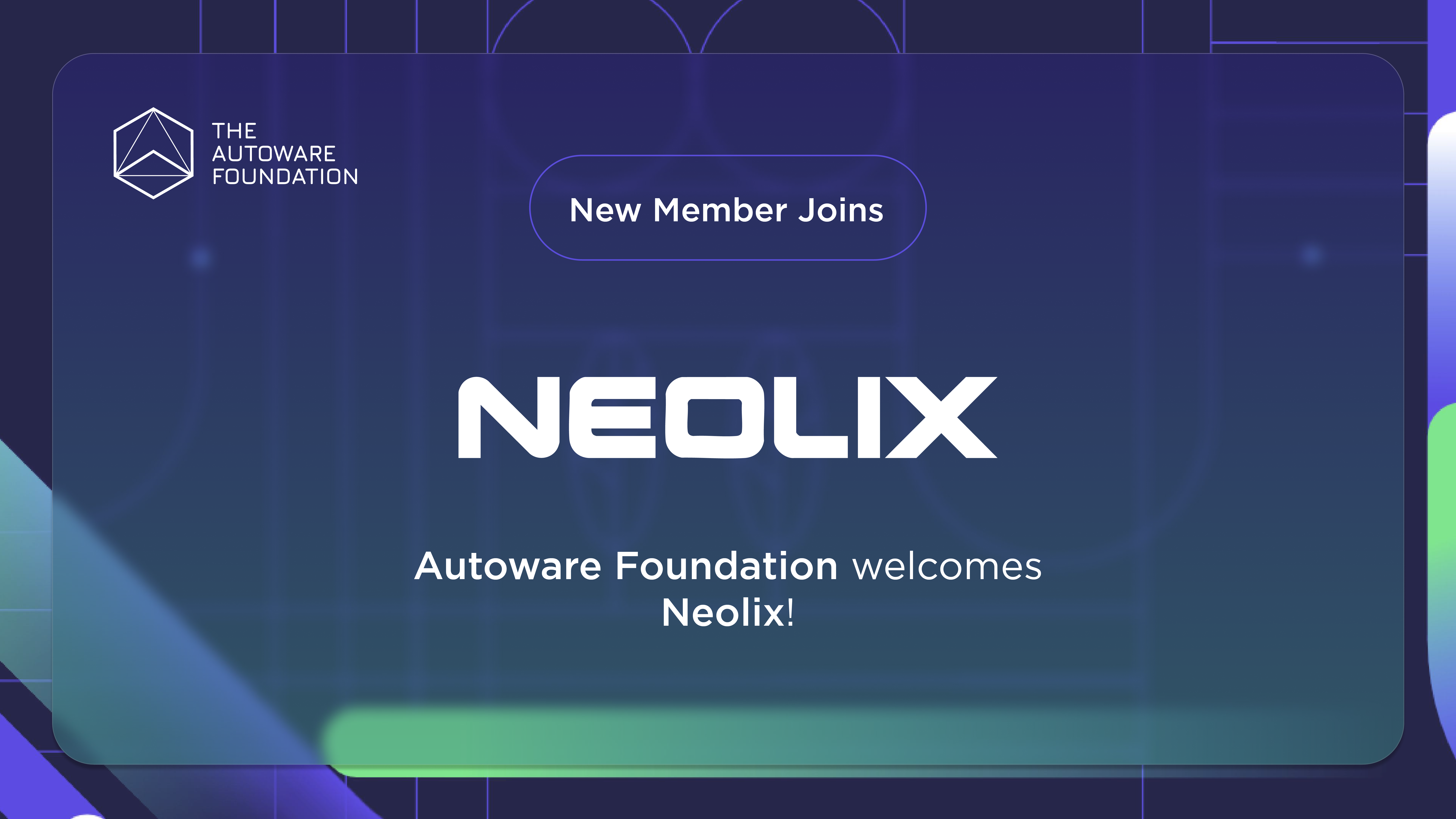
The CoE meeting returned after a short summer pause, bringing together our university partners to share research progress and collaboration updates.
Key Highlights
Research Showcase: Work of many CoE representatives was highlighted in the Autoware Foundation social media channels to bring visibility and recognition to work.
Roadmap Taskforce: Carried over the conversation on the work that has been done at the Roadmap task force to inform the CoE members.
Off-Road Autonomy: Progress on datasets, training, and simulation for terrestrial and space exploration use cases.
Collaboration Opportunities: Upcoming EU projects, NASA/Space ROS alignment, and discussions on dataset standards and affordable platforms.
Autoware CoE Research Showcase

This month’s meeting highlighted a range of recent academic contributions from CoE members:
- Personalized Autonomy: Dr. Ziran Wang presented ongoing work using LLMs and VLMs to make behavioral planners more transparent and understandable to drivers.
- Vehicle Dynamics: Associate Prof. Hormoz Marzbani shared progress on scalable tire dynamics modeling and learning for control, supporting safer and more adaptive driving behavior.
- Automated Bug Detection: The UC Irvine team (Josh Garcia and Alfred Chen) demonstrated tools for automated bug finding and fixing, applied not only to Autoware but also to Apollo and OpenPilot. Their efforts led to NSF CAREER Awards for both professors.
- Clemson AutoDrive Platform: Venkat and his students showcased results from their simulation racing leagues with 60–70 teams, which ran without software crashes. Their digital twin environments are now being extended beyond racing to support off-road autonomy research.
Autoware Roadmap Taskforce Overview
The CoE meeting also reviewed progress from the Autoware Roadmap Taskforce, which launched earlier this year to coordinate execution across working groups. The taskforce is structured into four phases (P1–P4, three months each) and nine working groups, spanning core AV development, enabling technologies, and production/validation.
Three main objectives guide the effort:
- Incorporate cutting-edge AI-first technologies as Autoware transitions from v1.0 to v2.0.
- Deliver a production-ready stack that members can commercialize.
- Expand deployments of Autoware to more vehicles and increase autonomous mileage.
This structured approach ensures that research advances from CoE members can connect directly to Autoware’s roadmap, supporting the transition from lab prototypes to production deployments.
Off-Road Working Group Focus
The Off-Road WG, led by Po-Jen Wang, is taking an end-to-end approach to autonomy in extreme environments, spanning both terrestrial and space applications.
- Terrestrial vehicles: Off-road racing and mining vehicles, where LiDAR-based perception can be applied.
- Space exploration: Mars rovers and Lunar Terrain Vehicles, where harsh conditions make LiDAR impractical, requiring vision-based perception pipelines.
A modified version of the AutoSeg foundation model is being applied, trained on off-road datasets to deliver three key perception capabilities:
- Free space detection (drivable vs. non-drivable areas)
- Object detection (structures, vehicles, vulnerable living beings, etc.)
- Terrain classification (paved, dirt, vegetation, snow, etc.)
Planning and control modules are being adapted for rough terrain, with tighter coupling between perception and control to ensure stability in challenging conditions.
Dataset Integration and Training Progress
To support robust off-road perception, CoE members have combined six open datasets — including Rellis3D, Goose, ORFD, Yamaha-CMU, CaSSeD, and OFFSED — under a unified labeling scheme. A custom parsing and configuration framework has been developed to standardize classes and formats across sources.
Early training results are promising:
- Free space segmentation models have reached ~80% IoU, showing reliable detection of drivable areas.
Work continues on object detection and terrain classification, with initial tests already demonstrating generalization on unseen data.
While the dataset size (~22k images) remains smaller than typical on-road datasets, discussions are underway with potential industry contributors to expand the pool of off-road training data.

Simulation Environments
The Off-Road WG is extending Autoware’s simulation capabilities to cover both terrestrial and space-focused use cases:
- Mining environments: New vehicle and terrain models are being developed in CARLA 0.10, enabling realistic testing of heavy-duty off-road applications.
- Off-road racing: A scalable Isaac Sim RoboRacer model is being upgraded from 1/10th to 1/5th scale. A configurable racetrack generator has been built, allowing randomized parameters such as track width, banking, and corner angles.
- Mars environment: A digital twin has been created based on NASA Perseverance rover locations, with terrain models verified against rover images.
- Lunar environment: An environment based on a candidate Artemis landing site at the lunar South Pole has been developed, complete with detailed terrain and rock assets.
These environments provide realistic testbeds for validating perception, planning, and control pipelines in conditions ranging from industrial sites to planetary surfaces.


Collaboration Opportunities and Next Steps & Suggestions
The August meeting also highlighted upcoming opportunities for joint work and cross-university collaboration:
- Poznan University : Preparing a real off-road project with potential EU funding, including a 700 m² covered test facility with basalt sand for lunar rover analog studies.
- Virginia Polytechnic Institute and State University : Collecting small-scale airport data and opening access to off-road test sections. Alignment with Space ROS standards is in progress through NASA’s Picnic team.
- Standardized Platforms: Suggestions were raised for creating a common, affordable platform, similar to F1TENTH, to accelerate off-road autonomy research.
- Simulation & Physics: Interest in converging simulators and advancing physics models for granular media was shared by several members.
- Dataset Guidelines: Discussions began around tiered dataset requirements to ensure consistency across different projects.
The August CoE meeting marked a strong restart after the summer break, with new research results, simulation progress, and cross-university collaborations pointing toward impactful outcomes. From personalized autonomy and scalable vehicle dynamics to lunar and Martian testbeds, the CoE community continues to expand the boundaries of what Autoware can achieve in research and education.
We look forward to the September meeting and the next wave of updates from our university partners.


